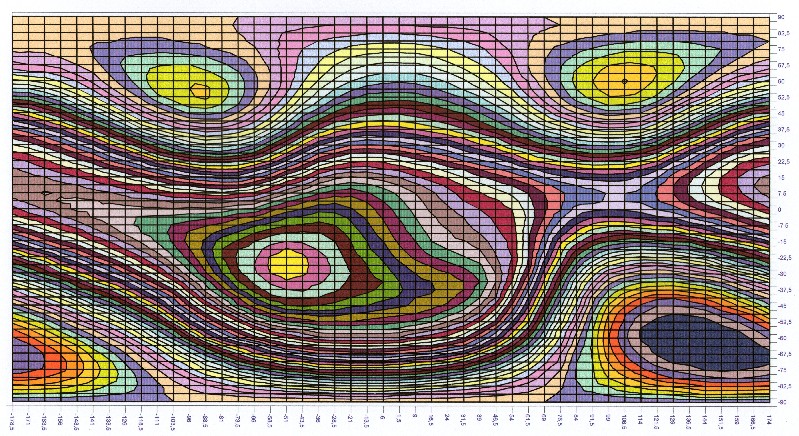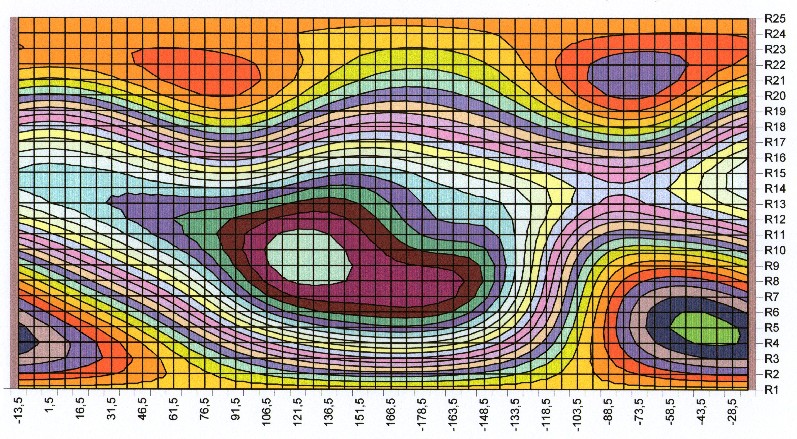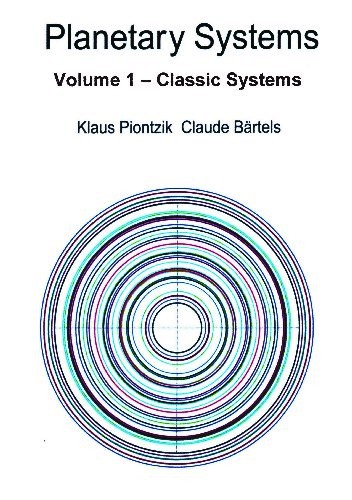| Copyright © Klaus Piontzik | ||
| German Version |
|
The whole magnetic field changes its shape - in the long term.
This slow change is called secular variation and
results in the course of time that the magnetic field in its polarity reverses.
According to Geoforschungszentrum Potsdam, the last pole reversal is back about 750000 years. According to A. Hanslmeier about 780000 years, who calls this reversal the "Brunhes-Matuyama Reversal". |
 |
 |
 |
| 1700 | 1800 | 1900 |
| Illustration 4.4.1 – Temporary stability over 200 years |
|
Figures 4.4.1 from the "World Data Center for Geomagnetism" in Kyoto
show the situation again for two hundred years. The images are based
on geological finds and long-term calculations of the earth's magnetic field.
If you compare these images with today's models from 2005, 2010, 2015, there is virtually no change in the field structure. Although intensities change and the extrema also change their position somewhat, here too no significant change in the overall field structure can be detected. |
| The field of total intensity is so temporary over time more or less constant. |
| It is therefore ideally suited for a general analysis of the earth's field. |

| Illustration 4.4.2 – total intensity 1980 |

| Illustration 4.4.3 – total intensity 2010 |
| The comparison of the illustrations shows that there are
no major differences between 1980 and 2012 in the structure of the field.
The magnetic field (total intensity) has remained sufficiently constant during the past 30 years. See also "Grid Structures of the Earth's Magnetic Field", chapter 2, The Earth's Total Field, pages 24-33. |
| The total intensities are ideal for a general analysis of the earth's field. |

|
200 sides, 23 of them in color 154 pictures 38 tables Production und Publishing: ISBN 978-3-7357-3854-7 Price: 25 Euro |